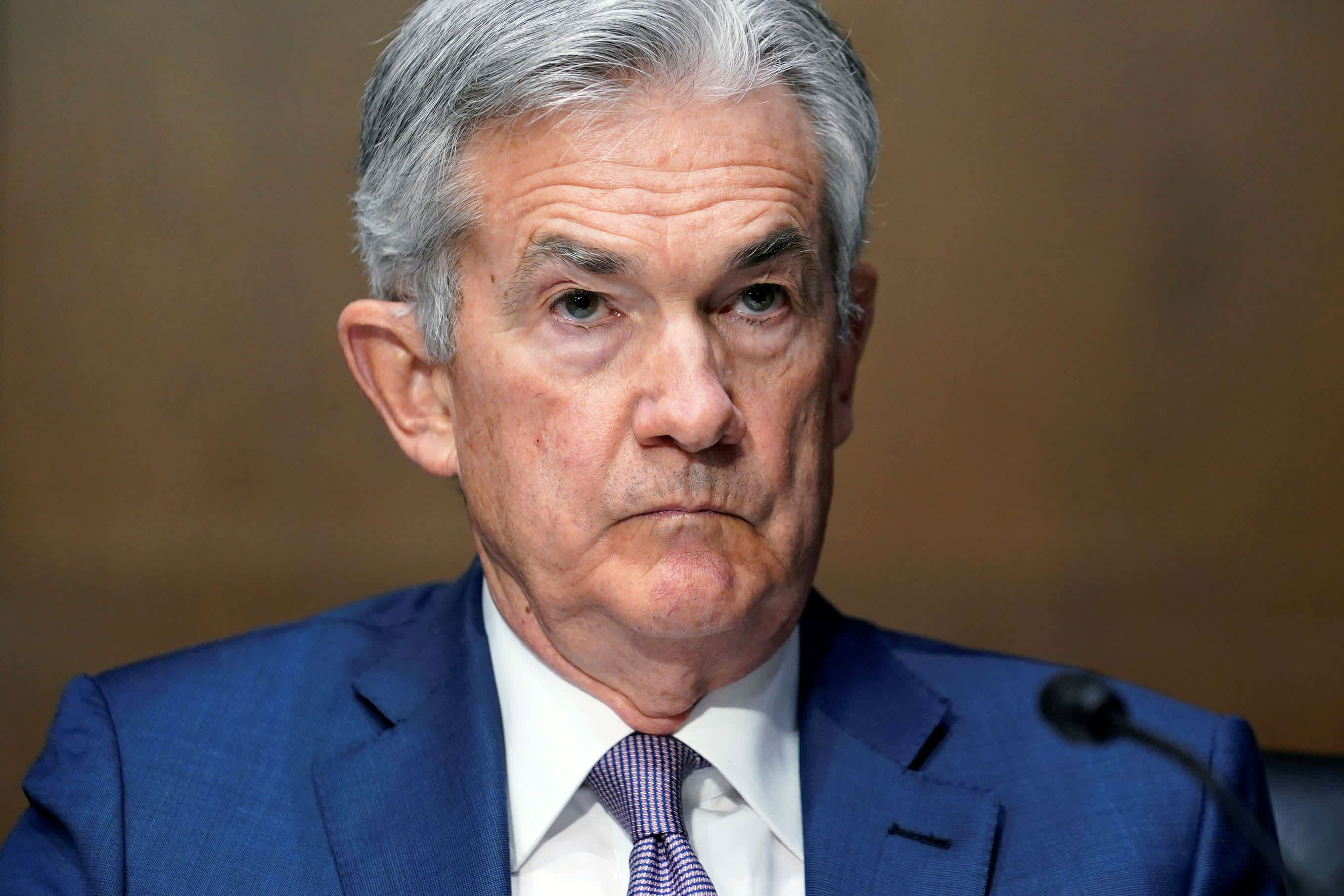Fed will need to reassure the market it’s not thinking about dialing back its support

Federal Reserve Chairman Jerome Powell testifies before the Senate Banking Committee hearing on “The Quarterly CARES Act Report to Congress” on Capitol Hill in Washington, December 1, 2020.
Susan Walsh | Pool | Reuters
Federal Reserve Chairman Jerome Powell has a few nerves to quell among market participants wondering when the central banks will start tapping the brakes on all the help it’s been providing.
The big buzzword surrounding the Fed now is “tapering.” It’s a reference to pulling back on the monthly bond purchases that have helped keep the financial system flush with cash and have encouraged investors to continue to take on risk despite stock market valuations that are their highest since at least the dotcom bubble of the early 21st century.
Markets figure that as long as the Fed keeps pumping, then it’s safe to keep buying.
Powell and other central bank officials say they’re committed to keeping the bond purchases going — and short-term borrowing rates anchored near zero — until the economy shows that it’s strong enough to run on its own.
One key element to that is inflation, which the Fed wants to run consistently around a 2% level that it’s missed for most of the last decade. Should inflation heat up, however, it eventually will force the Fed to tighten its policy.
Part of that tightening would include reducing the $120 billion-plus pace of asset purchases – hence, the “taper” talk, and, more specifically, worries over a “taper tantrum.” The market experienced just such a reaction back in 2013, when former Fed Chairman Ben Bernanke first raised the idea for the program that was happening then.
Powell will be looked at Wednesday to provide reassurance that the Fed isn’t contemplating a taper, even with some inflation pressures starting to build in the system.
Most Fed watchers are expecting him to do just that.
“Powell is very good at accentuating the negative i.e. ‘We’re not even thinking about thinking about raising interest rates,'” said Vincent Reinhart, chief economist at Mellon, repeating Powell’s pledge in June.
“He’ll push back, presumably hard, about the notion that they have any near-term idea about tapering, and that will be the negative,” he said.
The market, though, likely will take that as a positive.
Investors have ridden a Fed liquidity river since late-March 2020 to push the stock market up about 72% as measured by the S&P 500, despite the death grip of the Covid-19 pandemic and the damage it has caused to parts of the economy.
One key has been an accommodative Fed that now has said it will allow the economy to run hotter than it would have historically, in the interest of achieving “inclusive” economic benefits. Powell will be looked at to continue that kind of talk.
“The personal dynamic is what’s going to be interesting, how hard he pushes back against tapering,” Reinhart said. “He was there during the taper tantrum, and the message he always gives is you’re supposed to listen to the chair. He’s got to make that pretty clear.”
The rise of inflation fears
There have been a few factors that have incited the tapering question.
One goes back to Reinhart’s statement about listening to the chair.
While Powell has been clear about keeping policy accommodative, some of the regional presidents have been expressing concern that inflation could rise up sooner than expected and force a change in policy as soon as this year.
Others have been market indicators themselves.
One popular benchmark, the 5-year breakeven, is projecting inflation to rise to 2.15%, tied for the highest it’s been in almost eight years. (The breakeven compares 5-year Treasury yield to TIPS of the same duration.)
There also are clear price pressures building in the economy.
The Case-Shiller home price index released Tuesday showed an increase of 9.5%, one of the biggest monthly gains in history. And there’s always asset price inflation, which besides the stock market has included the meteoric rise of bitcoin. Copper, a traditional economic yardstick, is up more than 32% over the past year and nearly 3% in January alone.
On top of that, there already is more than $3 trillion of stimulus coursing through the U.S. economy, with President Joe Biden wanting to add $1.9 trillion soon and untold amounts later in infrastructure and other spending.
Still, Powell is likely to shake off those indicators and focus on a more macro-based look.
What could change
“While a fiscal boost means the economy should run faster, it still needs to cover a lot of distance
towards its goals before any adjustments take place, and the Fed will adopt a posture of strategic patience to allow these improvements – particularly in inflation expectations – to unfold,” wrote Krishna Guha, head of global policy and central bank strategy at Evercore ISI.
The chairman also has been clear about wanting to give the markets plenty of notice about when tapering will begin, which Guha thinks won’t happen until 2022 and then take a year before the Fed stops growing its $7.5 trillion balance sheet.
Consequently, the post-meeting statement likely will see little change, while Powell, at his news conference afterwards, will keep the message simple.
“We expect no substantive changes in the post-meeting statement,” wrote Citigroup economist Andrew Hollenhorst. “Later this year, the statement may be substantially revised to reflect an improving public health outlook, which would involve changing or removing the sections of text related to downside risk related to COVID-19.”
That means more zero interest rates and more bond buying, despite what future indicators are saying now.
“The market has been on a veritable treasure hunt to find anything that suggests the Fed is thinking of actually moving,” said Quincy Krosby, chief market strategist at Prudential Financial. “Why would he deviate now from what he’s been saying?”




